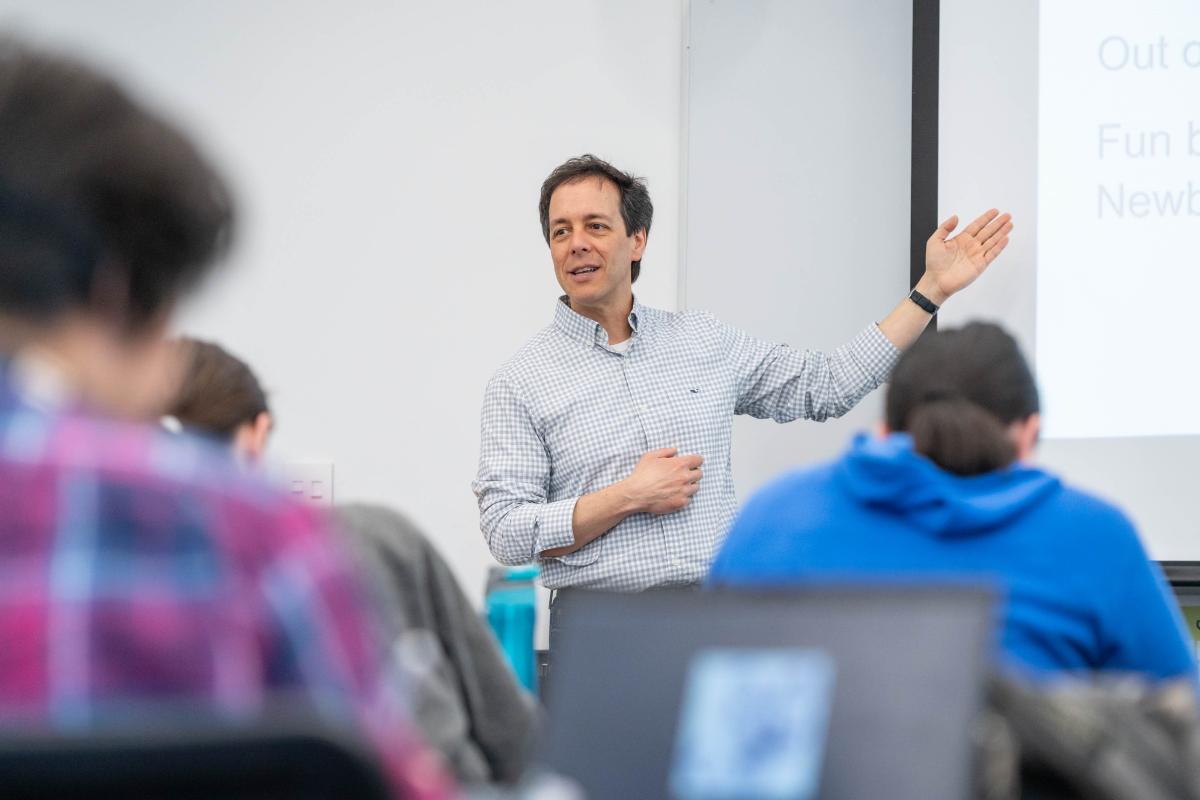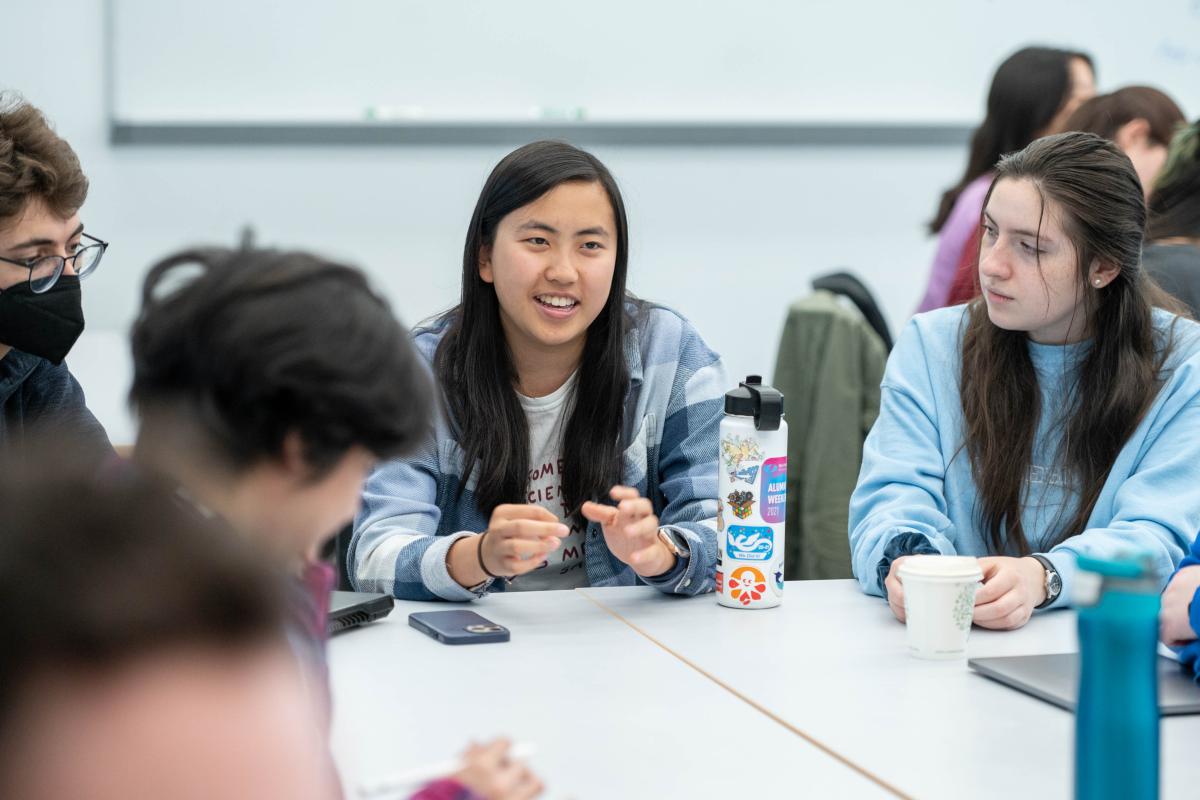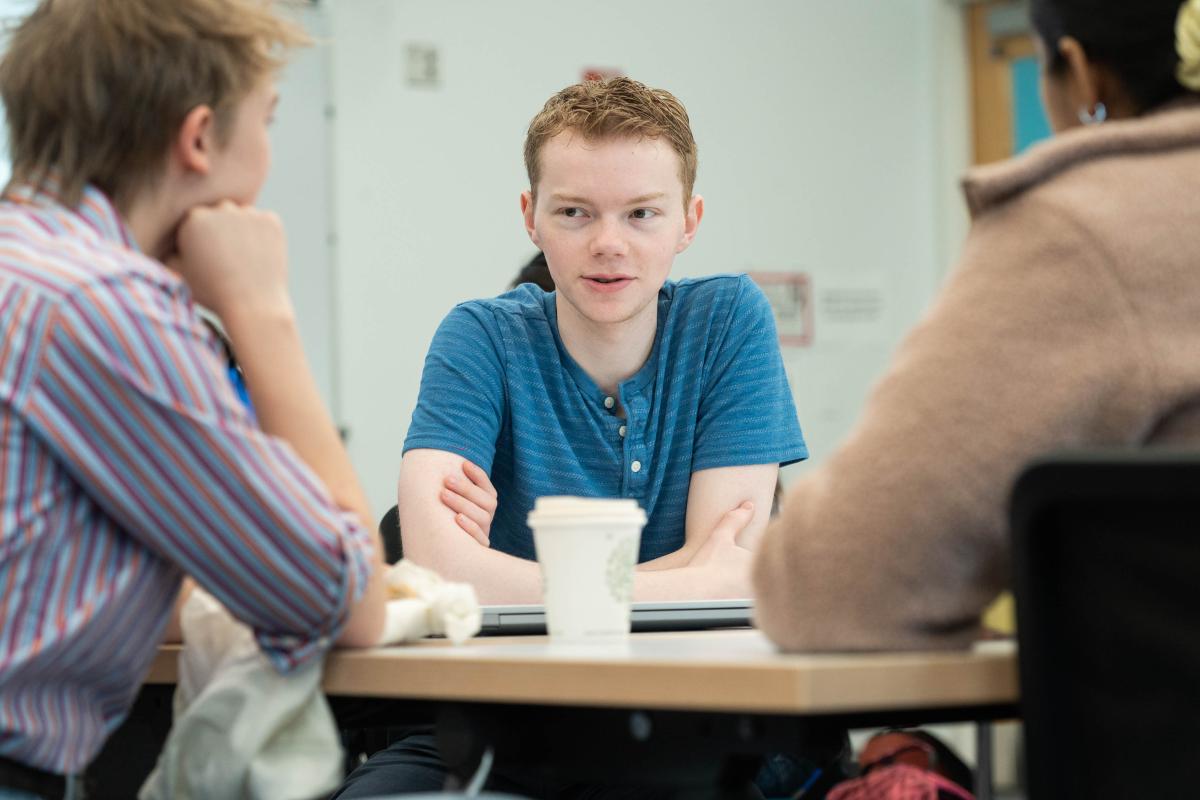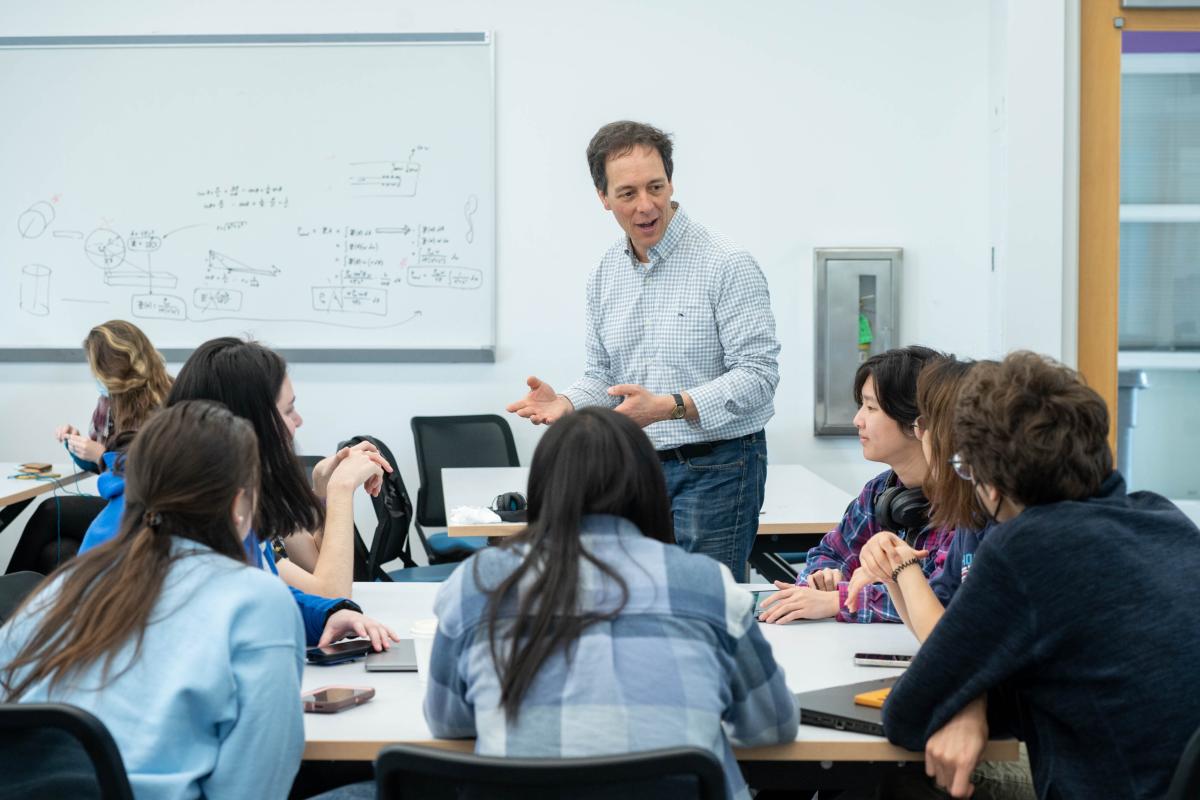STORY: New Interdisciplinary Course Helps Students See Engineering’s Big Picture
May 22, 2023
“Engineering in Context” allows students to self-integrate concepts of sustainability, ethics, and history into their studies.
A new humanities course called “Engineering in Context,” or EIC, is helping students create their own personalized construct for understanding the societal implications of engineering.
Created and taught by Rob Martello, professor of the history of science and technology, EIC invites students to explore different contextual frameworks—such as ethics, sustainability, and historical context—through the lens of another technical course of their choosing in math, science, or engineering to see how these contexts play out in real life.

Professor of the history of science and technology, Rob Martello, addressing Engineering in Context course.
“The topic of the context of engineering is not new at Olin,” says Martello. “It’s sort of in Olin’s DNA to show students where our field of study comes from and its repercussions in society. But with our new strategic plan and vision of Engineering for Everyone, we’re looking for novel and interesting ways to help our students understand the ramifications of their work as engineers.”
Instead of developing a new course around a single context, Martello opted to “go meta” and tackle a range of different contexts at once, thereby making space for students to learn about all of them and how they play out together in the real world.
EIC appealed to students from the very beginning, attracting sophomores through seniors and filling up quickly enough that Martello opted to raise the course cap to allow more students in. Cara Mulrooney ’24 enrolled in EIC because she wanted more opportunities to study how the technology that engineers create can affect other people.

Maya Lum'23, Tigey Jewell- Alibhai'23, Allison Li'24, Cara Mulrooney'24 pictured left to right respectively working on Engineering in Context group activity.
“As engineers, I strongly believe that we don’t take as much time as we should to explore topics likes ethics, sustainability, and historical context,” says Mulrooney, who is applying ethics to a renewable energy class through multiple real-world case studies. “We can get very caught up in the product we’re making and the impact it has on the problem we’re trying to solve, but not enough on the impact on others and our environment.”
For Mulrooney, Martello’s open and exploratory way of teaching also allows students to steer discussions toward what’s both relevant to the class and important to them in the moment.
“We do readings and have discussion questions, but our groups are fluid, and our conversations drift off to tangential but relevant topics, like diversity in engineering and the ethics of using ChatGPT,” says Mulrooney. “It’s a beautiful way to lead a class because as engineers, we sometimes think that ethical decisions are clearcut. Understanding diverse perspectives can give you other outlooks that make the ‘right’ answer not so clear.”
Another benefit of the EIC model is that it folds in several levels of pedagogical innovation.

Rowan Jansens '25 and EIC peers in group discussion.
“Often, interdisciplinary integration means taking a chain of courses that are designed to go together: Course A + Course B = Integrated Course C,” says Martello. “With EIC, we’re seeing what happens when we design a course to be one half of this chain, and the student gets to decide what the other half is and how they want to approach the integration.”
Beyond the EIC students learning from each other, Martello also brings faculty into the fold by inviting teachers from the students’ technical courses to class for a panel discussion and group breakout sessions. For their final projects, Martello encourages students to adopt the role of curricular co-designer by examining ways in which they can offer new perspectives on the courses they integrated over the semester.
Laurel Rodriguez Mitton ’23 is on a team applying both history and ethics to “Robotics Systems Integration,” another Olin class in which students create fully functioning interdisciplinary robotic systems. She was able to take some of the contexts she learned and discussed in EIC—such as how the introduction of automated looms during the Industrial Revolution led to changed labor laws and the world of fast fashion—and transform them into curricular suggestions.

Rob Martello and students in Engineering for Context Classroom.
“As part of our project, we made a mini lesson plan for the course and shared it with the faculty over an hour-long lunch discussion,” says Rodriguez Mitton. “They were super on board with hearing our suggestions on how the syllabus could be modified for next semester, including perhaps adding in a field trip to see automation at work nearby.”
For Martello, the EIC course was a game-changer that he looks forward to running again.
“I want to incorporate some new ideas, such as adding a co-teacher and maybe identifying faculty partners early on,” says Martello. “I personally have learned so much during EIC that will change the way I teach several of my other courses. In that way, the students have already produced a change with their work—it’s thrilling to experience their input and creativity.”